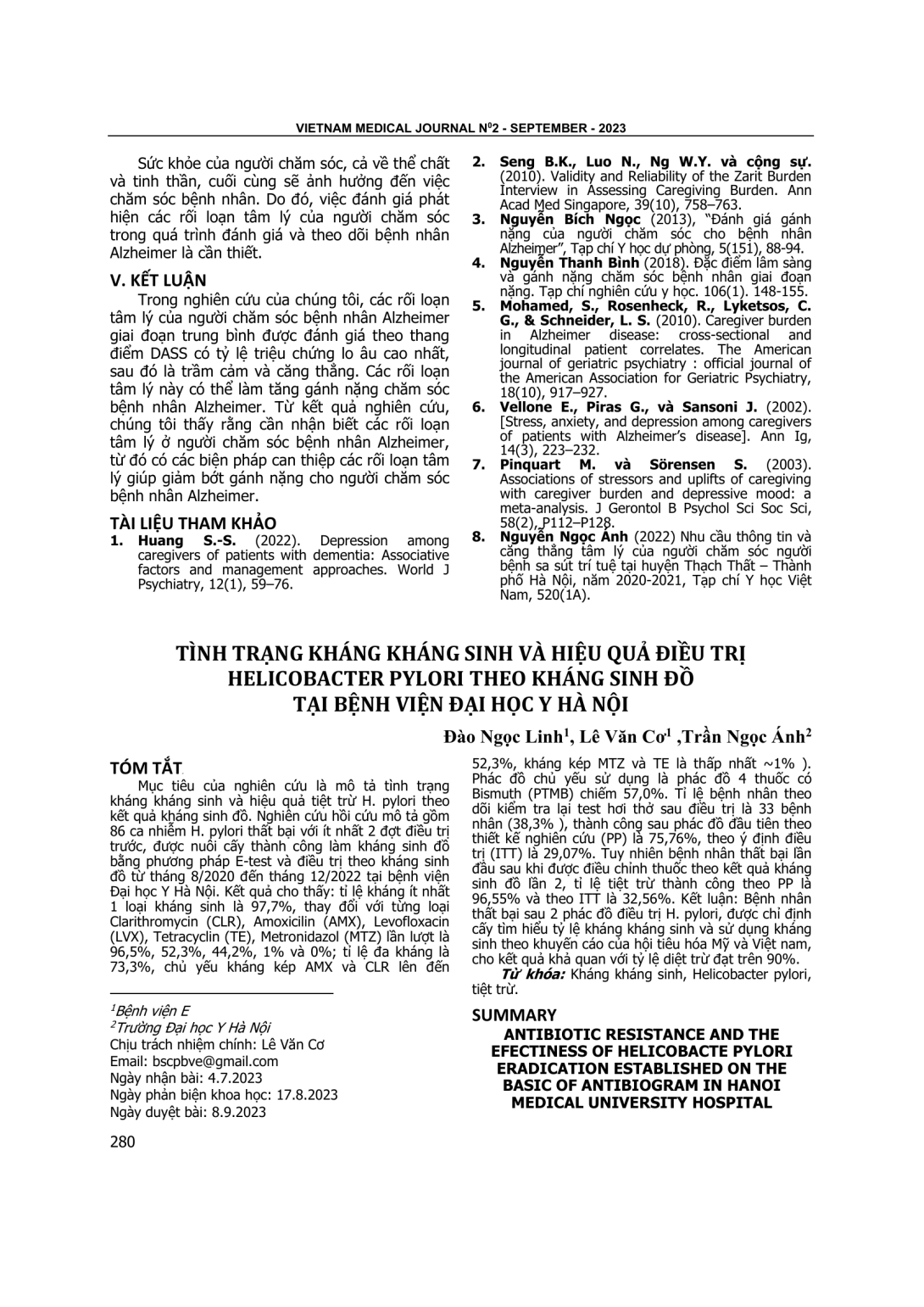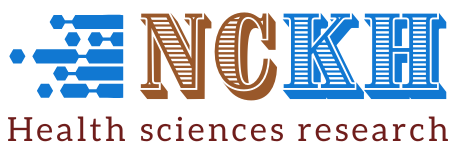
Mục tiêu của nghiên cứu là mô tả tình trạng kháng kháng sinh và hiệu quả tiệt trừ H. pylori theo kết quả kháng sinh đồ. Nghiên cứu hồi cứu mô tả gồm 86 ca nhiễm H. pylori thất bại với ít nhất 2 đợt điều trị trước, được nuôi cấy thành công làm kháng sinh đồ bằng phương pháp E-test và điều trị theo kháng sinh đồ từ tháng 8/2020 đến tháng 12/2022 tại bệnh viện Đại học Y Hà Nội. Kết quả cho thấy: tỉ lệ kháng ít nhất 1 loại kháng sinh là 97,7%, thay đổi với từng loại Clarithromycin (CLR), Amoxicilin (AMX), Levofloxacin (LVX), Tetracyclin (TE), Metronidazol (MTZ) lần lượt là 96,5%, 52,3%, 44,2%, 1% và 0%; tỉ lệ đa kháng là 73,3%, chủ yếu kháng kép AMX và CLR lên đến 52,3%, kháng kép MTZ và TE là thấp nhất ~1% ). Phác đồ chủ yếu sử dụng là phác đồ 4 thuốc có Bismuth (PTMB) chiếm 57,0%. Tỉ lệ bệnh nhân theo dõi kiểm tra lại test hơi thở sau điều trị là 33 bệnh nhân (38,3% ), thành công sau phác đồ đầu tiên theo thiết kế nghiên cứu (PP) là 75,76%, theo ý định điều trị (ITT) là 29,07%. Tuy nhiên bệnh nhân thất bại lần đầu sau khi được điều chỉnh thuốc theo kết quả kháng sinh đồ lần 2, tỉ lệ tiệt trừ thành công theo PP là 96,55% và theo ITT là 32,56%. Kết luận: Bệnh nhân thất bại sau 2 phác đồ điều trị H. pylori, được chỉ định cấy tìm hiểu tỷ lệ kháng kháng sinh và sử dụng kháng sinh theo khuyến cáo của hội tiêu hóa Mỹ và Việt nam, cho kết quả khả quan với tỷ lệ diệt trừ đạt trên 90%.
The objective of the study was to describe the antibiotic resistance status and the effectiveness of H. pylori eradication based on the results of the antibiotic resistance of cultured bacteria. A retrospective descriptive study included 86 H. pylori infected patients who had failed with at least 2 previous courses of treatment, were successfully cultured for antibiotic biogram by E-test method and treated based on the antibiogram since August 2020 to December 2022 at Hanoi Medical University Hospital. The results showed that: the rate of resistance to at least one antibiotic was 97.7%, varying with each type of Clarithromycin (CLR), Amoxicillin (AMX), Levofloxacin (LVX), Tetracycline (TE), Metronidazol (MTZ) corresponding is 96.5%, 52.3%, 44.2%, 1% and 0%; the rate of multi-resistance is 73.3%, the rate of dual resistance to AMX and CLR is the highest, up to 52.3%, while dual resistance to MTZ and TE is the lowest ~1%). The main regimen used is bismuth-based quadruple therapy (PTMB) accounting for 57.0%. The patients who followed up and checked the Breath test after treatment was 33 patients (38.3%), the success after the first regimen was 75.76% by per-protocol analysis, and 29.07% by intention-to-treat analysis. However, the patients who failed the first time based on the antibiogram were adjusted for the second time, and the successful eradication rate was 96.55% by PP and 32.56% by ITT. Conclusions: The patient who failed after two H. pylori treatment therapies, was assigned to culture to find out the rate of antibiotic resistance and were used antibiotics as recommended by the American Gastroenterology Association and Vietnam had sastisfactory results with an eradication rate of over 90%.
- Đăng nhập để gửi ý kiến
